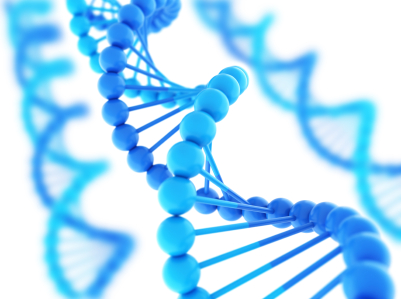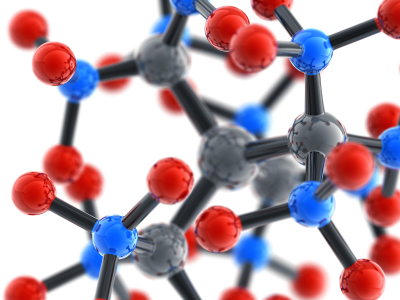Rats Exposed to Jet Fuel Pass Epigenetic Changes on to Third Generation
A recent study of rats showed that exposure to hydrocarbons (jet fuel JP-8) can bring about disease not just in the rats who were exposed, but also in subsequent generations. Epigenetics is the study of how environmental events or biochemical changes can affect the structure of DNA, e.g. by attaching extra methyl groups. (These kinds of “epimutations” are separate from the inherited genetic makeup we receive from our parents, but new evidence suggests that some can be passed on to future generations.)
When first generation female rats were exposed to jet fuel, third generation rats showed 33 different examples of DNA methylation as well as obesity.
Previous research has shown similar signs of transgenerational transmission of disease resulting from first generation exposure to chemicals such as bisphenol A, phthalates, dioxins, and pesticide mixtures.
Study of Twins Sheds Light on Epigenetic Mechanisms Implicated In Bipolar Disorder
At the 5th Biennial Conference of the International Society for Bipolar Disorders, H. Sugawara and colleagues reported on a particular example of epigenetics, an emerging field that studies ways that events and substances in the environment affect the structure of DNA. Often methyl or acetyl groups attach to DNA, making it easier or more difficult to transcribe. Sugawara’s group discussed hypermethylation of the serotonin transporter gene in bipolar disorder in an analysis of monozygotic twins discordant for bipolar disorder.
Monozygotic (identical) twins are highly concordant for bipolar disorder, meaning if one has the illness the other is likely to, but this does not occur 100% of the time. Thus, environmental or epigenetic mechanisms could account for the lack of genetic transmission of the illness in the odd cases in which one twin does not develop the illness.
Sugawara’s research group found that DNA hypermethylation of the allele encoding the serotonin transporter occurred in the twins with bipolar illness but not in those without. Once the expression of this particular gene had been identified as a difference between twins with and without bipolar disorder, the researchers examined the gene in non-twin patients with bipolar disorder compared to healthy controls and confirmed that people with bipolar disorder were more likely to have the hypermethylated allele.
The researchers believed that carrying a short form of the serotonin transporter was associated with DNA hypermethylation, and they went on to study the expression of mRNA for the transporter in bipolar patients carrying the short form of the allele. They found that DNA methylation was also higher at the serotonin transporter site in postmortem brains of bipolar patients.
Editor’s Note: This study provides one of the first insights into possible environmental mechanisms that explain why some people at risk for bipolar disorder develop the illness and others do not. Another possible mechanism for differential expression of the illness has been suggested by E.F. Torrey and colleagues, who believe that a viral infection may enter an individual’s genome and directly alter DNA sequences. The current data from Sugawara’s research group suggest the importance of further study of the serotonin transporter site in bipolar disorder and the mechanistic reasons for the DNA hypermethylation that occurs there.
Depression Associated with Increased DNA Methylation
Epigenetics is an emerging field where researchers are studying the ways environmental events and biochemical changes can affect the structure of DNA. Chemicals such as methyl groups can accumulate on DNA (a process called methylation), which usually results in suppression of genes in that area. DNA is tightly wound around proteins called histones, which can also be methylated or acetylated (when acetyl groups accumulate) based on events in the environment, including stressors and drug use. The environmental events do not change the genetic inheritance people receive from their parents, but instead change the ease with which genes are transcribed (or switched on).
At the 2012 meeting of the Society of Biological Psychiatry, Dr. Yurong Xin et al. presented an abstract that indicates that depressed patients may have much more DNA methylation at CpG sites on genes. CpG sites occur in many genes and refer to a place where a cytosine and a guanine (two of the four building blocks of DNA) sit next to each other on the same strand of DNA (the ‘p’ refers to the chemical bond between the two). CpG sites can become methylated. Xin and colleagues measured 27,578 CpG sites across 14,000 genes in the human genome. They found an eightfold increase in DNA methylation at these CpG sites in depressed patients compared to controls.
Editor’s Note: Previous research has found that early life experiences like psychosocial stress can lead to epigenetic changes. The new findings by Dr. Xin indicate that DNA methylation may occur and accumulate across the lifespan and suggests that DNA methylation may be associated with the emergence and progression of depression. Future treatments for depression could target this DNA hypermethylation, but determining how to do that selectively without affecting normal functioning may be a challenge.
Epigenetics Update
In the BNN we have previously written about the role of epigenetics in the onset and course of bipolar disorder. Epigenetics refers to the idea that events and substances in the environment can affect the structure of DNA by adding chemicals (often methyl or acetyl groups) onto DNA and histones (structures around which DNA is wound) in such a way that the DNA is more or less likely to be transcribed and activated to produce new proteins. Thus our DNA is shaped not only by the genetic inheritance we receive from our parents, but also by events in the environment (which do not alter the sequence of DNA but can influence how easily the DNA gets turned on to produce proteins in our bodies.)
Researcher David Sweatt published a review article on epigenetics and memory in the journal Neuropsychopharmacology in 2012. In it he examined research on rodents who show epigenetic changes after repeatedly being exposed to stimuli such as a fear-inducing environment or cocaine.
Sweatt made two main points abut the mechanisms by which the environment influences gene expression. The first is about the effects that histone deacetylase (HDAC) inhibitors can have on epigenetics. Contextual fear conditioning (when a rodent experiences danger in a particular place and begins to associate fear with that particular physical environment) can be augmented by histone deacetylase (HDAC) inhibitors, which include sodium butyrate and valproate. In rodents who have been given cocaine and whose interest in cocaine is associated with the physical environment they were in while receiving the cocaine, Marcelle Wood reported that extinction of this context-dependent cocaine-induced place preference could also be enhanced with an HDAC inhibitor.
Sweatt’s second point was that DNA methylation is necessary for long-term memory, and traumatic learning like that of the rodent avoiding the place it encountered danger can actually be erased using zebularine, an inhibitor of DNA methylation.
Editor’s Note: Zebularine can also reverse other lifelong responses to neonatal trauma such as decreases in brain-derived neurotrophic factor (BDNF), a neuroprotective factor necessary for long-term memory, in the prefrontal cortex. Zebularine can also block the long-lasting increases in motor activity in response to repeated cocaine use, i.e. cocaine sensitization. Thus, it looks like much of what one learns or responds to in the environment is coded at the level of epigenetics when DNA or histones are methylated and/or acetylated (among other chemical modifications).
Amazingly, some of these epigenetic marks on our DNA and histones can even be transmitted to the next generation! Read more
Valnoctamide Effective in Mania, Maybe Without Valproate’s Side Effects
 Valproate (Depakote), also known as divalproex sodium and valproic acid (VPA), is highly effective in the treatment of mania, seizures, and migraine. However, its use in pregnant mothers can cause birth defects and developmental delay. A closely related compound, valnoctamide, may not pose the same dangers, but its efficacy in mania has only recently been investigated.
Valproate (Depakote), also known as divalproex sodium and valproic acid (VPA), is highly effective in the treatment of mania, seizures, and migraine. However, its use in pregnant mothers can cause birth defects and developmental delay. A closely related compound, valnoctamide, may not pose the same dangers, but its efficacy in mania has only recently been investigated.
Yuly Bersudsky et al. reported at the 4th Biennial Conference of the International Society for Bipolar Disorders conference in Sao Paulo, Brazil in March that valnoctamide was more effective than placebo as an add-on to risperidone for the treatment of mania.
Since there is now evidence that valnoctamide does work in mania, it is plausible that some of the shared characteristics of valproate and valnoctamide, such as increasing brain GABA and blocking sodium channels, are responsible for both drugs’ antimanic effects. Read more
Early Life Stressors Linked to Persistent Inflammation and Endocrine Abnormalities
Epigenetics is a relatively new area of study that examines changes in DNA regulation and structure that can come about as a result of environmental events, as opposed to the genetic inheritance (DNA sequence) people receive through their parents’ genes. Epigenetic effects occur when an environmental stressor or chemical causes methyl or acetyl groups to attach to DNA or to histones (around which DNA are wound). These epigenetic changes determine how difficult it is to turn on genes coded in the DNA (see here for more information about the way the environment produces these epigenetic effects).
After the jump: Several studies presented at the 65th Annual Scientific Convention of the Society of Biological Psychiatry earlier this year suggested a link between environmental stress and both inflammation and abnormalities in DNA.
 Read more
Read more
Environmental Influences on Gene Structure May Be Transmitted to Offspring
It has been thought that one fundamental principle of genetics is that the impact of environment factors cannot be passed from one generation to the next via the genetic code. New data suggest this may not be true.
In an emerging field called epigenetics, researchers are finding that while the impact of environment and life experiences is not registered in DNA sequences, environmental factors can influence the structure of DNA or tightness of its packaging. Early life experiences, particularly psychosocial stress, can lead to the accumulation of methyl groups on DNA (a process called methylation), which generally constricts DNA’s ability to start transcription (turning on) of genes and the synthesis of the proteins the genes encode. DNA is tightly wound around proteins called histones, which can also be methylated or acetylated based on events in the environment. When histones are acetylated, meaning that acetyl groups are attached to them, DNA is wound around them more loosely, facilitating gene transcription (i.e. the reading out of the DNA code into messenger RNA, which then arranges amino acids in order to construct proteins). Conversely, histone methylation usually tightens the winding of DNA and represses transcription.
A Positive Placebo-Controlled Trial of Valproate (Depakote) in Autism
A recent issue of the Journal of Neuropsychopharmacology reported that a placebo-controlled trial of valproate (Depakote) showed the drug is effective in treating irritability in those with autism. Approximately 50% of the participants were less irritable on valproate compared with only about 15% on placebo. Valproate was also generally well-tolerated.
EDITOR’S NOTE: This is a particularly important finding, both for clinical treatment and for its potential theoretical implications. Valproate, in addition to its properties as a mood-stabilizing anticonvulsant that increases brain GABA levels and exerts a variety of other neurobiological effects, is also a histone deacetylase inhibitor.





